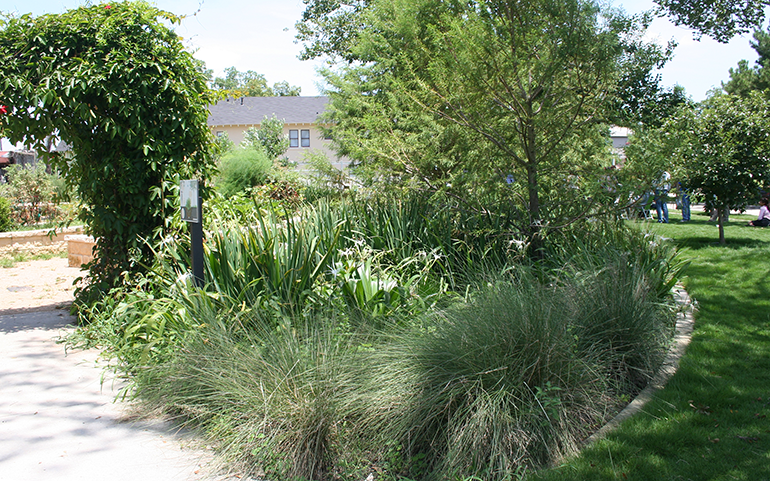On This Page

Low Impact Development strikes a balance between the conservation of natural resources and the economics of successful development. This list highlights the six main benefits of Low Impact Development as detailed in Designing for Impact: A Regional Guide to Low Impact Development.
Improved Water Quality

As Low Impact Development captures and releases stormwater, it filters pollutants from runoff, thus cleaning it before it enters natural waterways. U.S. Environmental Protection Agency (EPA) studies demonstrate the effectiveness of Low Impact Development for removing pollutants, such as metals, nutrients, sediments, and pathogens from stormwater.
Cost Effective

The National Resource Defense Council analyzed 17 Low Impact Development case studies comparing the cost of Low Impact Development and conventional stormwater management practices. In most cases, Low Impact Development methods were both economically and environmentally beneficial, with capital cost savings ranging from 15 to 18 percent.
The savings can be attributed to
- Decreasing the amount of site grading and preparation;
- Decreasing the si]e of stormwater management ponds and storm sewers;
- Reducing pipes, inlet structures, curbs, and gutters; and
- Decreasing the volume of concrete for roadway paving.
More Space for More Stuff

Low Impact Development can reduce the need for large detention facilities and heavy stormwater infrastructure, like pipes. By reducing the size and costs of stormwater management facilities, more land and more capital become available to develop additional units or public amenities, like parks, on the site.
Reduced Potential Flood Impacts

Conventional stormwater conveyance systems carry stormwater runoff into pipes that drain the site as quickly as possible. This has the potential to overwhelm infrastructure and cause flash floods. However, Low Impact Development systems are designed to capture and retain water on-site, allowing runoff to soak into the ground and/or slowly discharge from the site.
Multi-Functional

Low Impact Development features not only manage stormwater, but can serve as a public amenity. For example, a trail system can meander around a bioswale or wetlands, and other natural features can be preserved as open space.
Increased Property Value

If Low Impact Development is designed to maximize its dual functionality as stormwater infrastructure and an attractive, natural amenity, then Low Impact Development can increase property values and the marketability of developments. Studies reveal that lots in Low Impact Development neighborhoods sell for $3,000 more than lots in competing areas not using Low Impact Development.
Who Benefits from Low Impact Development and How
If designed, constructed, and maintained properly, Low Impact Development can benefit a variety of stakeholders many different ways.
Environment

- Protect site and regional water quality
- Preserve on-site hydrologic systems
- Preserve trees and natural vegetation
- Reduce potential for flooding impacts
- Create and preserve open space
Public/Municipalities

- Balance urban growth needs with environmental protections
- Reduce impact on public stormwater infrastructure
- Reduce potential for flooding impacts
- Reduce system-wide municipal infrastructure and utility maintenance costs
Developers

- Reduce land clearing and grading
- Increase quality of building lots and project marketability
- Increase number of units due to less land needed for detention ponds
- Reduce infrastructure costs (stormwater conveyance and treatment systems, roads, streets, and curbs and gutters)
- Preserve or create natural amenities that can increase property values
Property Owners

- Save money via water conservation
- Reduce potential for flooding impacts

